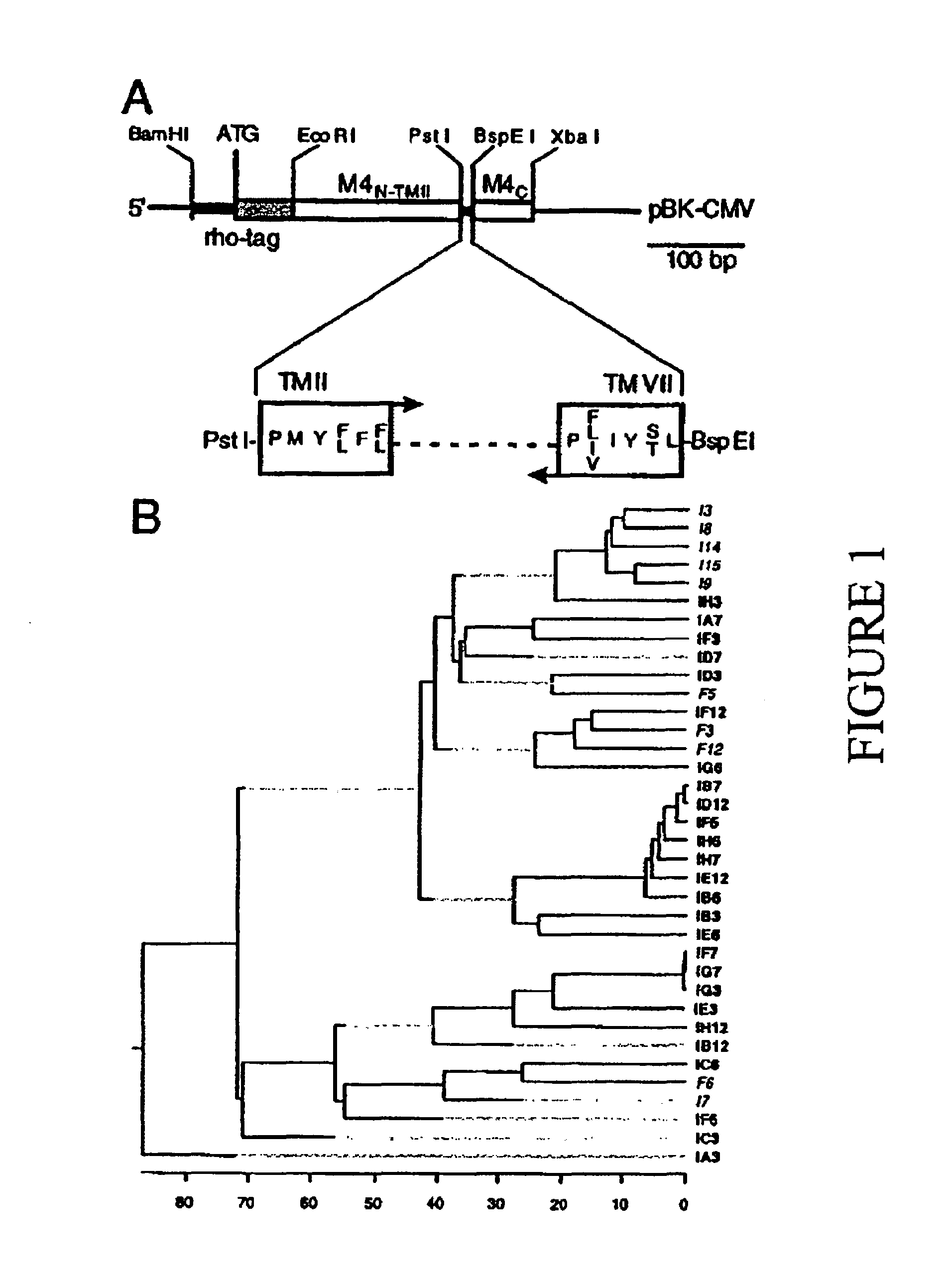Olfactory receptor expression libraries and methods of making and using them
a technology of olfactory receptors and expression libraries, applied in the field of cell biology and medicine, can solve the problems of limited progress in the functional expression of odorants/ligand receptors, inability to detect and discriminate between thousands of beneficial or toxic odorants, and inability to recognize odorants/ligand receptors with little information, etc., to achieve efficient translocation of polypeptides, efficient expression, and great efficiency
- Summary
- Abstract
- Description
- Claims
- Application Information
AI Technical Summary
Benefits of technology
Problems solved by technology
Method used
Image
Examples
example 1
Identification of Odorant / Ligands for Olfactory Receptors with Binding Sites Generated by PCR Amplification with Degenerate Primers by Functional Expression of Libraries of the Receptors in Human Cell Lines
[0106]The following example sets forth the generation of an expression plasmid library containing a large and diverse repertoire of nucleic acids encoding odorant / ligand binding regions comprising transmembrane (TM) II–VII regions of mouse olfactory receptor sequences. From this library, 80 chimeric receptors were tested against 26 odorants after transient transfection into the human cell line HEK-293. Three receptors were identified that responded to micromolar concentrations of carvone, (−) citronellal and limonene, respectively.
[0107]A PCR-based amplification strategy taking advantage of the homology shared among olfactory receptors at the beginning of TM II and the end of TM VII was used to generate a library containing a large number of olfactory-receptor sequences. The struc...
PUM
| Property | Measurement | Unit |
|---|---|---|
| temperature | aaaaa | aaaaa |
| temperature | aaaaa | aaaaa |
| temperatures | aaaaa | aaaaa |
Abstract
Description
Claims
Application Information
 Login to View More
Login to View More - R&D
- Intellectual Property
- Life Sciences
- Materials
- Tech Scout
- Unparalleled Data Quality
- Higher Quality Content
- 60% Fewer Hallucinations
Browse by: Latest US Patents, China's latest patents, Technical Efficacy Thesaurus, Application Domain, Technology Topic, Popular Technical Reports.
© 2025 PatSnap. All rights reserved.Legal|Privacy policy|Modern Slavery Act Transparency Statement|Sitemap|About US| Contact US: help@patsnap.com

